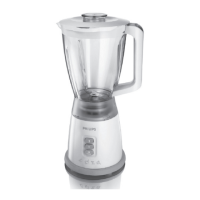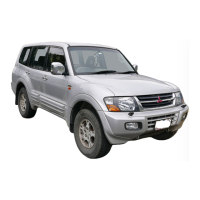Chapter 3 Cooling, heating and air conditioning systems
2
1
4.6 Typical radiator installation details
i Air duct 7 Upper fan shroud
2 Radiator cap 8 Lower fan shroud
3 Drain plug 9 Cooler hoses (automatic transmission on/yJ
4 Reservoir hose 10 Radiator
5 Upper radiator hose
i i Overflow tube
6 Lower radiator hose 12 Coolant reservoir 8
14 Apply a thin, uniform layer of RTV sealant to both sides of the new
gasket
and position it on the housing.
15 Install the cover and bolts. Tighten the bolts to the torque listed in this
Chapter’s Specitications.
16 Reattach the hose to the fitting and tighten the hose clamp securely.
17 Refill the cooling system (see Chapter 1).
18 Start the engine and allow it to reach normal operating temperature,
then check for leaks and proper thermostat operation (as described in
Steps 2 through 4).
4 Radiator - removal and installation
Refer to illustration 4.6
Warning: Wait until the engine is completely cool before beginning this
procedure.
1 Disconnect the negative battery cab!e from the battery.
2 Drain the cooling system (see Chapter 1). If the coolant is relatively
new or in good condition, save it and reuse it. If necessary for clearance,
remove the air duct.
3 Loosen the hose clamps, then detach the radiator
hoses from
the fit-
tings. If they’re stuck, grasp each hose near the end with a pair of adjust-
able pliers and twist it to break the seal, then pull it off - be careful not to
distort the radiator fittings! If the hoses are old or deteriorated, cut them off
and
install new ones.
4 Disconnect the reservoir hose from the radiator filler neck.
5 If equipped, remove the screws that attach the upper fan shroud to the
radiator and slide the shroud toward the engine. Remove the lower
shroud, on models so equipped.
6 , If the vehicle is equipped with an automatic transmission, disconnect
the cooler hoses from the radiator (see illustration). Use a drip pan to
catch spilled fluid.
7 Plug the lines and fittings
8 Remove the radiator mounting bolts.
9 Carefully lift out the radiator. Don’t spill coolant on the vehicle or
scratch the paint.
10 With the radiator removed, it can be inspected for
leaks
and damage.
If it needs repair, have a radiator shop or dealer service department per-
form the work as special techniques are required.
11 Bugs and dirt can be removed from the radiator with compressed air
and a soft brush. Don’t bend the cooling fins as this is done.
12 Check the radiator mounts for deterioration and make sure there’s
nothing in them when the radiator is installed.
13 Installation is the reverse of the removal procedure.
14 After installation, fill the cooling system with the proper mixture of anti-
freeze and water. Refer to Chapter 1 if necessary.
15 Start the engine and check for leaks. Allow the engine to reach normal
operating temperature, indicated by the upper radiator hose becoming
hot. Recheck the coolant level and add more if required.
16 If you’re working on an automatic transmission equipped vehicle,
check and add fluid as needed.
5 Engine cooling fan and clutch -check and replacement
Warning: To avoidpossible iniury or damage, DO NOToperate the en-
gine with a damaged fan. Do not attempt to repair fan blades - replace a
damaged fan with a new one.
Check
1 Disconnect the negative battery cable and rock the fan back and forth
by hand to check for excessive beating play.
2 With the engine cold, turn the fan blades by hand. The fan should turn
freely.
3 Visually inspect for substantial fluid leakage from the clutch assem-
bly. If problems are noted, replace the clutch assembly.
4 With the engine completely warmed up, turn off the ignition switch and
disconnect the negative battery cable from the battery. Turn the fan by
hand. Some drag should be evident. If the fan turns easily, replace the fan
clutch.

